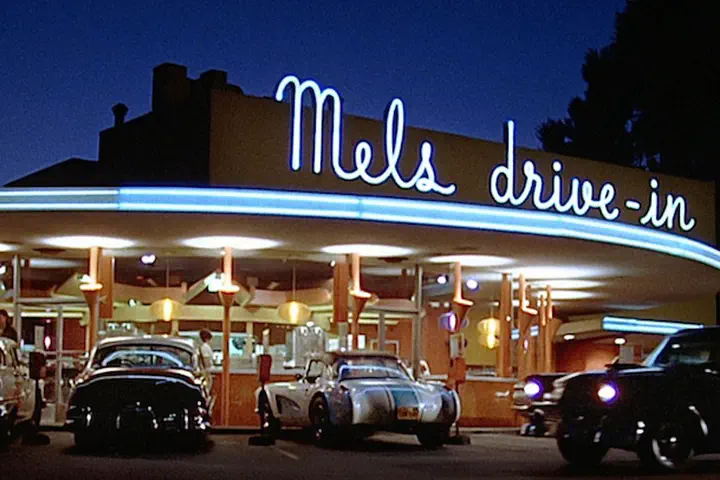Mike Love shops at Lidl
A short piece from a series of short pieces on the George Lucas movie American Graffiti

This short piece was written in March 2019 as part of a BCMCR Writing Group I’m part of. We meet monthly, each bringing a piece of writing. This year the theme of our work is George Lucas’ 1973 movie American Graffiti.
As a group we’re watching the movie several times and producing written pieces in response to a prompt. The prompt this piece was responded to was as follows:
In “Boundary, Place and Event in the Spatiality of History,” Edward Casey argues that “…the most important arena of action is not in the center of the stage but at the periphery—or better, peripheries, as there is always more than one kind of edge in a given circumstance. Rather than being the zone in which human action gives out or comes to an end, the boundary is precisely where it intensifies: where it comes to happen in the most effective or significant sense.” (Rethinking History, Volume 11, Number 4, December 2007: 508). Using Casey’s comment as a starting point, write no more than 500 words about some of the ways in which the songs and sounds in American Graffiti express the relation between centre and periphery.
Here is what I came up with….
The 1973 George Lucas movie American Graffiti opens and closes with two pop songs.
Bill Haley and The Comets’ “Rock Around The Clock” plays over the opening credits, “All Summer Long” by The Beach Boys closes the film. A song released in 1954 eventually gives way to another, released ten years later, in a film that distils the archetypal teenage experience of mid 20thcentury America into one night, narrated over 113 minutes, through the story of four main characters and a supporting cast. Everything so far points suggests the neat chronology of a time-bound narrative, with hard borders having a clear purpose, designed to keep our focus on the action unfolding on the screen.
But the real action takes place elsewhere. The real action takes place in mind of the viewer, in the mind of the listener.
The film’s soundtrack album, released on MCA records also in 1973, opens and closes with the same songs that bookend the film. Bar a handful missing due to licensing issues, the soundtrack presents a total of 41 songs in the exact order they appear in the movie.
The gatefold sleeve holds two records that form a different kind of boundary and create a record of a record. This pop culture artefact enables the experiences of the characters in another – the film – to break through the boundary of 113 minutes of screen time and the narrative of single night in Modesto, California, and into your home, onto your turntable.
The soundtrack thus worms its way into your story and begins to narrate the experiences you have; told instead over a lifetime of around 36,792,000 minutes – if you’re lucky – and where these pop songs and others like them act as punctuation, as bookmarks, as momentous momentos, creating a soundtrack compilation of verse/chorus/verse/chorus moments.
This is why, when ordering a hot-dog in a 50s-themed restaurant in Kings Heath, Birmingham, the onions will taste just that little bit more authentically American if Bill Haley or The Beach Boys are playing on the jukebox. But then you look around the room and see there is no jukebox, just a cheap speaker bracketed to the ceiling, and probably connected to a concealed iPod. Then you wonder why your brain just conjured up a jukebox (although you know why) and at that moment you notice how the frankfurter tastes exactly the same as the ones you get down at the Lidl.
And then you picture Mike Love in Lidl, struggling with a wonky trolley. This is a pleasant image, and your brain runs with it. You hope Mike Love drops his hotdogs in the car park, and then squashes them under a wheel of his wonky trolley.
You are doing a lot of the work here.
Bill Haley did his work a long time ago. Somewhere between The Beach Boys and now, George Lucas did his work, adding a new level of meaning to theirs. Each worked within the boundaries of media industry conventions: the three-minute pop song; the four-character movie.
But here, now. This is where it’s at. This is where the action is. You and your hot-dog. Bill Haley on the jukebox-not-jukebox. The imaginary Mike Love shaking his fist at the sky. This is the periphery. The hinterland. A million miles away from Modesto, California you may well be, but you and your hot-dog are where the action is now.
And you’ve been having fun all grey, wet Tuesday long.